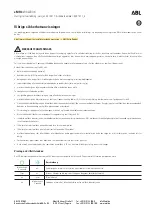
Holden Equinox Owner Manual (Holden-Localizing-Holden-12561772) -
2019 - crc - 6/26/18
268
Vehicle Care
Caution
Failure to follow the specific
coolant fill procedure could cause
the engine to overheat and could
cause system damage. If coolant
is not visible in the surge tank,
contact your dealer.
The coolant surge tank pressure
cap can be removed when the
cooling system, including the surge
tank pressure cap and upper
radiator hose, is no longer hot.
1. Turn the pressure cap slowly
anticlockwise. If a hiss is
heard, wait for that to stop.
A hiss means there is still
some pressure left.
2. Keep turning the pressure cap
slowly and remove it.
3. Fill the coolant surge tank with
a 50/50 mixture of clean,
drinkable water and DexCool to
the area pointed to on the front
of the coolant surge tank.
4. With the coolant surge tank
pressure cap off, start the
engine and let it run until you
can feel the upper radiator
hose getting hot.
Watch out for the engine
cooling fans.
By this time, the coolant level
inside the coolant surge tank
may be lower. If the level is
lower, add more coolant
mixture to the coolant surge
tank until the level reaches the
mark pointed to on the front of
the coolant surge tank.
5. Replace the pressure cap
tightly.
Caution
If the pressure cap is not tightly
installed, coolant loss and engine
damage may occur. Be sure the
cap is properly and tightly
secured.
Engine Overheating
The vehicle has an engine coolant
temperature gauge on the
instrument cluster and overheat
messages in the Driver Information
Centre (DIC) to warn of engine
overheating. See
. The DIC
also displays overheat messages.
The decision may be made not to lift
the bonnet when the engine coolant
temperature gauge is in the
overheat zone or an engine
overheat DIC message displays, but
instead to get service help
right away.
If the decision to lift the bonnet is
made, make sure the vehicle is
parked on a level surface. Then
















































